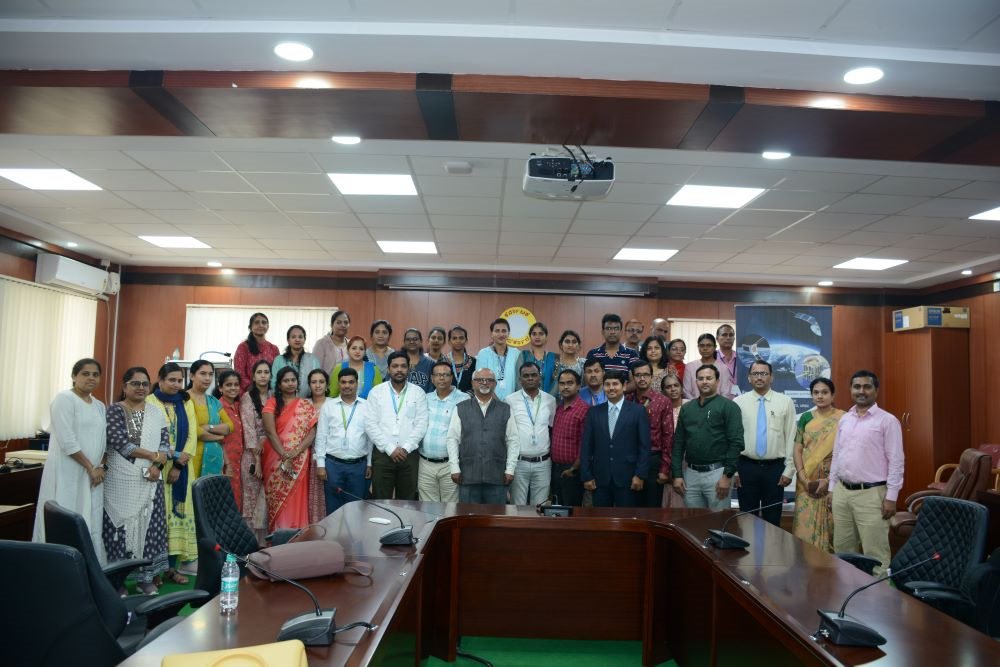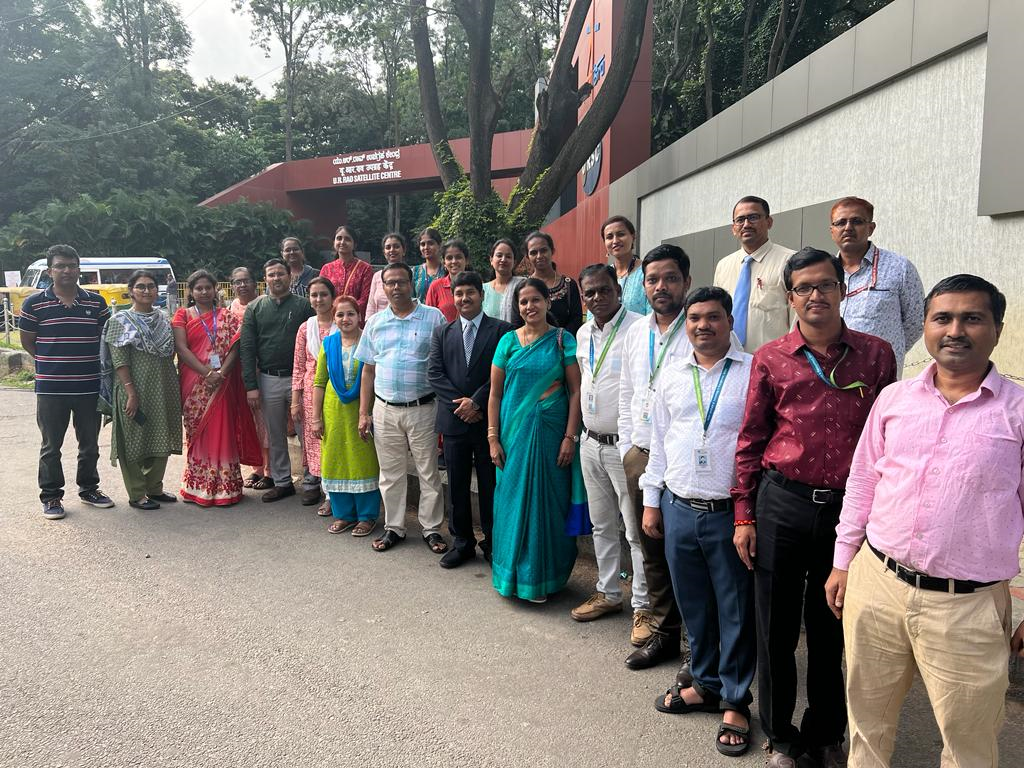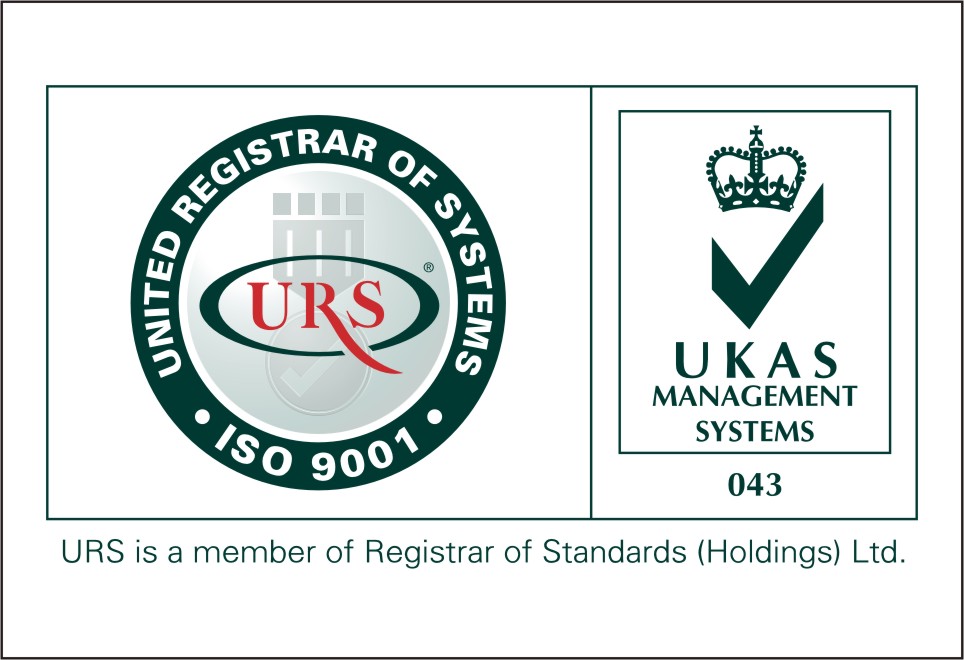Board for IT Education Standards
(An Autonomous Body promoted by the Govt. of Karnataka in association with educational institutions and IT Industries)
BITES Expert Session on “Satellites and their Application” and Industry Visit to URSC, Bengaluru
SESSION 1: BES

BES on “Satellites and their Applications”
Date: 14/07/2023 between 10.30 AM to 12 Noon
Venue: Karnataka State Higher Education Council (KSHEC), Bengaluru
Speaker: Dr. R Ranganath, Ex-Project Director, SPADEX, URSC
Satellites are artificial objects that orbit around celestial bodies like the Earth. They serve a wide range of applications in various fields and have become an integral part of modern technology and communication.
Dr Ranganath provided the following info on some common types of satellites and their applications:
Communication Satellites: These satellites are designed to facilitate communication between various points on Earth. They relay signals for television, radio, telephone, internet, and other data transmission services. Communication satellites are typically placed in geostationary orbits, allowing them to remain stationary relative to a specific location on Earth.
Earth Observation Satellites: These satellites are equipped with sensors and cameras to capture images and data about the Earth's surface, atmosphere, and oceans. They play a vital role in monitoring weather patterns, environmental changes, natural disasters, urban planning, agriculture, and resource management.
Navigation Satellites: Navigation satellites form the basis of Global Positioning System (GPS) and other similar satellite navigation systems. These satellites provide accurate positioning and timing information, enabling navigation for vehicles, aircraft, ships, and smartphones.
Weather Satellites: Weather satellites focus on monitoring and collecting data related to weather conditions and climate patterns. They help meteorologists track storms, forecast weather changes, and analyse long-term climate trends
Remote Sensing Satellites: These satellites use various sensors to detect and measure electromagnetic radiation from the Earth's surface. They are used in agriculture, forestry, geology, and environmental studies to monitor changes, assess natural resources, and detect pollution.
Scientific Satellites: Scientific satellites are deployed for space research and exploration purposes. They are used to study various celestial phenomena, planets, stars, and the universe beyond Earth.
Reconnaissance Satellites: Military and intelligence agencies use reconnaissance satellites to gather information about potential threats, monitor military activities, and assist in strategic planning.
Space Telescopes: These satellites are designed to observe celestial objects and phenomena from space without interference from the Earth's atmosphere. Examples include the Hubble Space Telescope and the James Webb Space Telescope.
Navigation Augmentation Satellites: These satellites enhance the accuracy and availability of satellite navigation systems in specific regions, such as the Wide Area Augmentation System (WAAS) for aviation.
Internet Satellites: Some companies are deploying constellations of low Earth orbit (LEO) satellites to provide global internet coverage to remote and underserved areas.
He informed these are few examples of satellite applications, and as technology advances, new applications and satellite types are continuously being developed. Satellites have revolutionized communication, navigation, Earth observation, and scientific research, contributing significantly to modern society's progress. Dr Ranganath handled the Q&A session efficiently answering all the questions by the faculty.
Session 2: URSC Visit

There were a total of 40 faculty from various engineering colleges across Karnataka who visited URSC, Bengaluru and witnessed the historical launch of “Chandrayana-3”. Senior scientists from URSC made a Presentation for the faculty, took them to Clean Room and Exhibition Room. Faculty thanked BITES and URSC for this unforgettable experience.

